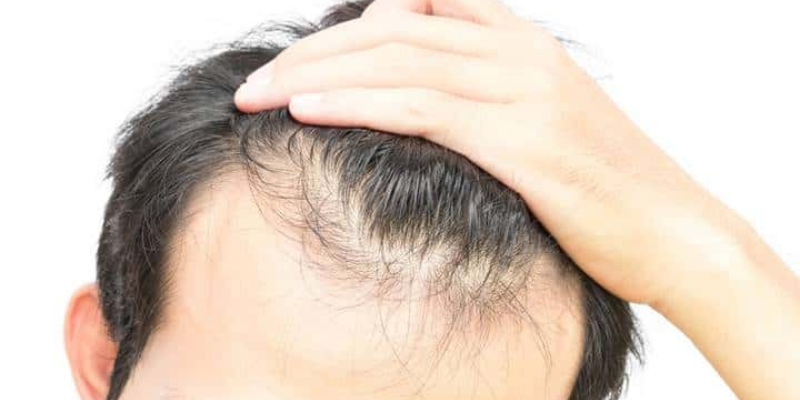How long after hair transplant are grafts secure issue is the issue of living and the cultivation progress of the hair follicles taken from the nape of people who suffers from baldness. Roots that are thick and strong are given attention in hair transplantation. People who suffer from openings and dilutions as a result of hair loss can also use this approach. As a result, those who are completely bald do not require hair transplantation.
Hair transplantation is the most effective treatment for baldness and hair loss. Re-shedding of transplanted roots is not possible with hair transplantation. In as little as six months, hair transplantation can restore a person’s hair to its former glory.
Surgical hair transplants are performed by teams of specialists in operating rooms. As a result, planting should be carried out with care and accuracy. It is possible for the patient’s image to be damaged by surgical errors. It is virtually hard to recover from these disadvantages. Only after hair transplantation may corrections be made.
The recipient location is the region where hair transplants are implanted. Transplanting grafts to the crown, hairline or mid-scalp is the most common procedure.
Specialized equipment use by the surgeon to make microscopic holes in the recipient’s skin.
What Is Graft? : How Long After Hair Transplant Are Grafts Secure
The graft is the name of the process of transferring the tissue of a living thing that does not have blood circulation to another region. Here, a living thing’s own tissue can be transported, as well as tissues of another living creature that do not have blood circulation. When thinking in terms of hair transplantation, the parts call graft here are the hair and the nourishing roots to which it attaches. The most important term in hair transplantation hair follicles call grafts.
People and institutions that aren’t specialists in hair transplantation don’t pay enough attention to the grafts that are gathered before hair transplantation, resulting in damage to the grafts during the acquisition, preservation, and planting stages of the procedure today. When taking grafts, skin structure, root structure, and extraction angle are all crucial. Instead of collecting the transplants, it is necessary to gather them properly.
However, it should not be forgotten that the hair follicles are also organs that need to be harvested throughout the grafting process. The preservation of the grafts after collection is also crucial. Due to inadequate storage conditions, a large percentage of the transplanted grafts will die. After collecting the grafts, facilities that do not yet employ the DHI Plus Gold method retain them in gauze or drinking water for many hours.
Skin and hair roots attach to a structure known as a graft. Grafts and hair follicles do not have the same meaning. One graft might include from one to four hair follicles, depending on the type of transplant. How many hair follicles the transplant has depends on the skin’s thickness. Each of the four graft kinds has its own advantages and disadvantages.
Hair root transplantation is a type of graft transplantation. Individual hair follicles cannot remove and transplant. In contrast, the grafts remove and transplant one by one in order to preserve the roots. Hair follicles transplant in groups of one, two, three, or four.
How to Calculate Grafts? : How Long After Hair Transplant Are Grafts Secure
The quantity of grafts a person requires to calculate before hair transplantation. Each person’s graft has its own unique characteristics and characteristics. Calculation and removal of grafts are based on the hair fibre, scalp structure, and the donor area’s amount of hair transplant. There are a lot of factors that go into the estimation of the number of grafts to implant. The density of the transplanted hair follicles should be in harmony with the density of the surrounding hair to produce a natural effect.
Consider the effectiveness of the patient’s nape area while estimating grafts (donor area). This means that the donor area must have a significant number of grafts and that some of those grafts must remain in that location after collection. Both the transplanted region and the hairy look around your neck keeps this way. A patient’s maximum number of hair follicles that removes and transplant doesn’t express the term “maximum graft” use in publications about hair transplantation completely.
How Long After Hair Transplant Are Grafts Secure: Process After Graft Removal
Aside from DHI hair transplantation, grafts maintain in their original location at all stages of harvest and transplantation. The way the roots maintain at this stage is crucial to the success of the process. As long as it keeps at room temperature for 2 hours, a transplant removed from the donor region can survive. To retain roots at room temperature is risky since the hair follicle collecting process can take up to three hours in total. A hyposol or cold isotonic drink can keep them alive for up to 6 hours without causing any damage.
As a result, the likelihood of waste in the gathered roots reduce to the absolute minimum. To begin with, the grafts must remove from the tissue fragments and classified according to how many hair follicles they have. As soon as the roots remove, it is important to group the hair strands according to their colour. In order to achieve successful hair transplantation, the channels must open to the correct depth and the grafts must insert at the correct angle. The “diffusion” approach is able to feed the new hair follicles until they adjust to their new locations.
In order to avoid waste, it is crucial that the channels are at the correct depth. In the absence of this, feeding issues may arise. The fact that tissue fragments have nutritional issues leads to waste and a lower sowing success rate. Also, if surgeons put grafts at the wrong angle, freshly generated hair strands will not have a suitable exit angle with the hair strands in the vicinity. As a result, the success of planting affects severely. This makes hair transplanting a delicate procedure that demands a high level of skill.
How Long After Bariatric Surgery Can You Have Caffeine as a Coffee Drinker?
As someone who enjoys coffee, you may have wondered if it is safe to consume caffeine after having bariatric surgery. The answer to the question “how long after bariatric surgery can you have caffeine?” is with restrictions, after waiting for at least three months. This is because the surgery reduces the amount of stomach acid that is produced, which can affect the absorption of certain compounds found in coffee. In answering, “can you drink fizzy drinks after gastric sleeve or any other bariatric surgery?” you should also avoid any other high-caffeine beverages such as energy drinks and soda. When you do start drinking coffee again, it is important to do so in moderation. Caffeine can cause dehydration and increase your risk of developing kidney stones, so it’s best to limit your intake of coffee to no more than two cups per day. It’s also essential to avoid adding any sugar or artificial sweeteners to your coffee since these can cause problems like gas and bloating. Additionally, be sure to drink plenty of water throughout the day to help keep you hydrated and reduce the chances of developing any complications. We hope this article answers “how long after bariatric surgery can you have caffeine?”






